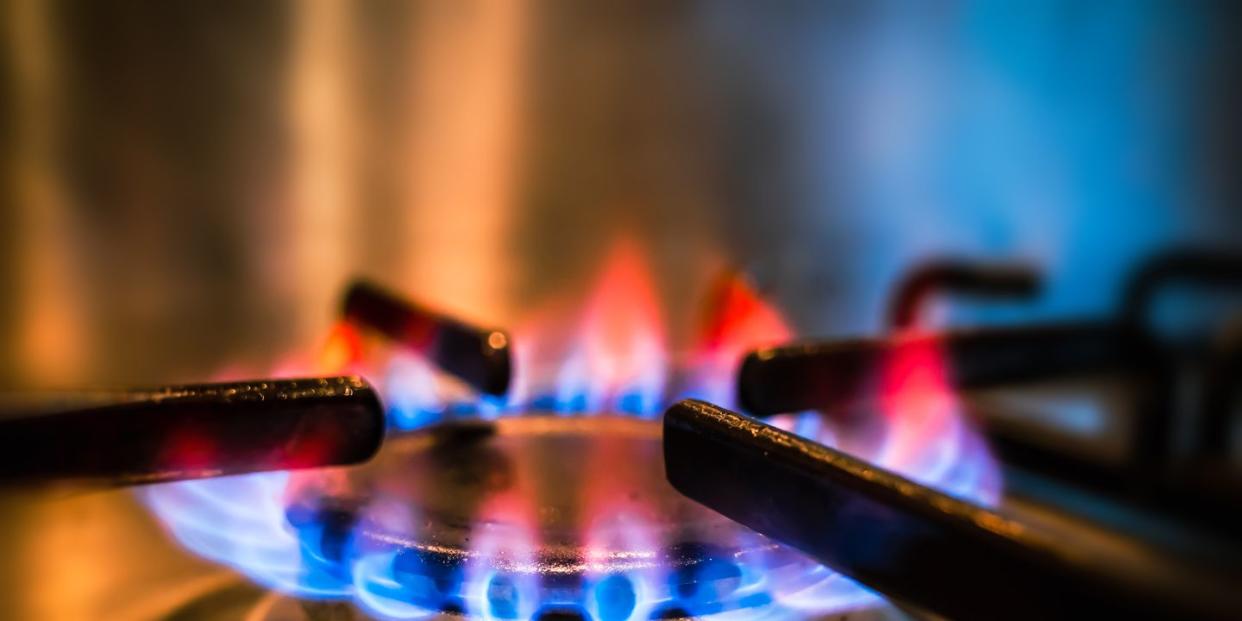A New Study Finally Clarifies Whether It's Safe To Use a Gas Stove

Since the start of the year, gas stove owners have had to readjust the flames of their precious devices. After the US Consumer Product Safety Commission (CPSC) told Bloomberg in January that they are considering a nationwide ban on the installation of new gas stoves, panic immediately ensued. Some said that was a bridge too far. But commissioner Richard Trumka Jr. pointed out that, "Any option is on the table. Products that can't be made safe can be banned."
While the warning was valid—gas stoves have been proven to release harmful airborne toxins including nitrogen oxide, carbon monoxide, and methane, the issue of whether the stoves will be banned completely left a lot of room for interpretation. As time went on, it seemed as if the ban talk was all smoke and no fire; a decrease in gas stove usage in new builds and cities has already been taking place quietly in the background of the noise. Still, the heightened debates in Washington with the House Oversight Committee and a recent study by Stanford on how the pollutants emitted from the flames travel throughout your home indicate this issue is not going to the back burner.
The study reveals that using the gas stove brings the ambient air concentration of nitrogen dioxide was 500 parts per billion, five times the safety benchmark for one-hour exposures set by the Environmental Protection Agency.
"Ultimately," says Carisha Swanson, House Beautiful's Director of Special Projects and an expert in kitchen appliances, "It is up to the government or the industry to set standardization levels for the output of anything. The only way anything changes is if there is the standardization of practices." (For her part, Swanson is dubious that a blanket gas ban will happen anytime soon: "I don't think that American consumers are going to make that switch. The American consumer loves fire," she says.)
Where the Smoke Began
The commissioner's original statement stems from a study connecting childhood asthma to gas stoves. Multiple studies have suggested that natural gas stoves release high levels of nitrogen oxides, carbon monoxide, methane, and other hazardous pollutants, but others conclude that the connection between the two does not have enough consistency to warrant a ban.
Meanwhile, another concurrent argument brewing against gas stoves centers on their effects on the environment. In 2019, Berkeley, California, became the first U.S. city to sign a law banning the installation of natural, fossil gas lines in new buildings.
But the truth is, swapping out gas stoves may not be that simple: "A ban would fail to address the overall concern of indoor air quality while cooking, because all forms of cooking, regardless of heat source, generate air pollutants, especially at high temperatures," said the Association of Home Appliance Manufacturers in a statement. "A focus on increased use of ventilation would be an effective solution to improve indoor air quality while cooking.”
The CPSC clarified in a statement that the agency currently doesn't have an official proposal to ban gas stoves and aims to research "gas emissions in stoves and exploring new ways to address health risks."
And, since any potential ban will not require homeowners to remove their existing gas stoves, many consumers will still be left wanting to know how best to use their ranges in a safe way.
What's the difference between gas and induction stoves?
About 40% of homes in America own a gas stovetop—it has been a household staple for generations due to affordability and the ability to control the flames. As of now, in most areas the debate on whether homeowners should install induction, electric, or gas stoves is up to preference. And no matter what stovetop you buy, a range hood should always be included in your kitchen remodel. Here's what you need to know about the two types of stoves.
Gas stove: The fuel source is natural gas that reaches the source through a gas line or propane system. Consumers are drawn to the flames as offer visual indicators while cooking.
Electric stove: TKTKTKTKTK
Induction stove: A magnetic field pulses to heat cookware, allowing a faster cooking time. At a higher entry point, the magnetic connection means that excess heat won't escape so the pan heats up quickly and distributes heat evenly.
If you are working on a new kitchen, some interior designers will suggest induction or electric, but the choice is up to your cooking style. All cooking (regardless of the source) releases particles that humans shouldn't breathe in.
Wait, so there are air pollutants in my home?
Whether or not you have a gas stove, the controversy surrounding them may spark a desire to start paying more attention to what we can do to ensure our homes are free of pollutants. The CPSC will continue to look into the growing concern and potential risks of gas-reliant homes. For now, it is important to keep in mind that indoor air pollution can be a result of improper ventilation from the off-gassing of various objects in your home like rugs or sofas.
In order to have a healthy environment in your home, "You can't have a home that is completely shut in," Swanson emphasizes. "You have to have airflow."
The bottom line: prioritize ventilation. From gas stoves to gas heat to off-casing furniture, there are various factors that cause pollutants in the air. Proper airflow is important. Open windows when the outdoor air quality is good, keep a fan going, and of course, use your range hood! With the uncertainty of the global climate and wildfires, your home has to be as safe as possible. To keep the flow going, we suggest investing in an air purifier to keep your air free of toxins. HEPA filters will clear the air of all pollutants, in and outside the kitchen. Check out the units tested and awarded by our editors below.
Follow House Beautiful on Instagram.
You Might Also Like

